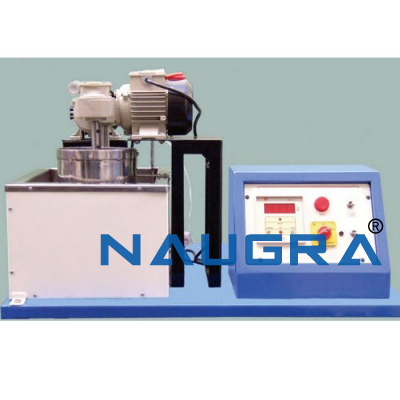
Product Supply Code: NLAB-TECHNICALAB15001
Product Name: Batch Enzyme Reactor
Tender Supply Category: Biochemical Engineering Lab Equipment
Hydrolytic Reactions are done through the enzyme dissolved in the aqueous medium. This technology is used in enzyme process. Enzyme Reactors can be operated batch-wise or continuously or through fed-batch.
There are three types of Reactors used in enzyme mediate conversions.
Stirred Tank Reactors:
Stirred Tank Reactors are simple to use in batch mode and comprises of a tank. This tank consists of a stirrer and fixed baffles which can improve mixing. Stirred tank is also used in free enzymes. It holds some arrangements to maintain temperature, pH, etc. of the reaction mix.
Membrane Reactors:
Membrane Reactors have a membrane such as Membrane Reactors to retain the enzyme. It has a hollow fiber to contain the enzyme. These are easy to install and can use more than one enzyme.
Continuous Flow Reactors:
It’s reactor volume is 5-10 times the volume of immobilized enzyme. Continuous Flow Reactors are available at low price and gives high productivity.
We provide you the best quality at cheap cost as we are the leading Batch Enzyme Reactor manufacturer and supplier. Our brand is popular world-wide and provides optimum performance.
Specification
Instructional Capabilities:
Batch Enzyme Reactor Quality Assurance: We being a leading Batch Enzyme Reactor manufacturer from India. NaugraLabEquipments are actively involved in providing precision equipments of premium quality to clients across the globe for Testing Lab and TVET Technical Lab, Industial Training Institutions. We always utilize the most advanced and sophisticated technology for production process of Batch Enzyme Reactor and supply exceptional range of other products like Batch Enzyme Reactor for tender supply from India.
